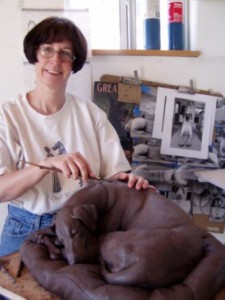Review by Ed Quillen
Political history – September 2004 – Colorado Central Magazine
The Biography of Casimiro Barela
by José E. Fernàndez
Originally published in Spanish in 1911 Translated and annotated by A. Gabriel Meléndez
Published in 2003 by University of New Mexico Press
ISBN 0-8263-2880-6
WHEN THIS BOOK ARRIVED, Martha naturally asked me “Who’s Casimiro Barela?” and I was able to reply that he was a rancher and state senator from the Trinidad area, and one of the authors of the 1876 Colorado Constitution.”
She replied with a look which implied that I spent too much time acquiring obscure Colorado lore, and not nearly enough time on minor matters like earning a living.
As his presence at the state’s constitutional convention indicates (he’s also one of only 16 individuals honored with a stained-glass window in the rotunda of the state capitol), Barela was an important figure in 19th-century Colorado, and a man whose many accomplishments merit a biography – for one thing, he served 40 years in the state senate, which may be a national record for tenure in a state legislature.
Barela was born March 4, 1847, in Embudo, New Mexico Territory, and schooled by Bishop J.B. Salpointe at Mora, N.M. He and his parents moved to Las Animas County, Colorado Territory, in 1867. Barela took up freighting and ranching. He prospered and was appointed county assessor in 1870.
After that, he was seldom out of public office. He was elected to the Territorial Assembly in 1871 and 1873. He was county sheriff in 1874, and a delegate to the constitutional convention of 1875-76. Mostly he served thereafter in the state senate, but was also county treasurer, county judge, and the unsuccessful Democratic candidate for state auditor. For most of his career, he was a Democrat, but switched to the Republican side in 1908.
HIS MAJOR POLITICAL FOCUS might be summed up in one of his statements: “if it concerns my race, especially if it concerns discrimination, I abdicate all my political ideologies and I dedicate myself to its defense at all times and all places.”
At his insistence (he was one of three Hispanic delegates to the constitutional convention), Colorado began with three official languages – German, Spanish, and English. He continued to oppose discrimination, looked after the interests of cattle and sheep growers, and promoted Columbus Day as a state holiday. He advocated statehood for New Mexico, and served as consulate for Mexico. Judging from the texts of his speeches, he was a fine orator and persuasive speaker.
Although he had helped write the Colorado constitution, Barela supported adopting a new one, since the old one was constantly being amended by the voters. One wonders what he’d think of it now, after decades of additional amendments.
In short, Barela was an interesting man who lived in interesting times, and thus a good subject for a biography.
But this isn’t a good biography. It was written in 1911, and it’s not an informed account of Barela’s life and career; indeed, it ends before Barela’s death while he was still in office. It’s a book of fulsome praise, but not enough substance:
“Senator Barela is a great humanitarian. He is effective, he is disinterested, and his altruism favors the oppressed. His talent in finance is first-rate and is linked to his genius in starting new ventures. His greatness cannot be eclipsed. His generous spirit of more than forty years has been a vein of gold and it is like a chain of flowers that is the pride of his generation in Colorado. He develops the most advanced thinking and puts every effort into making it a reality.”
The notes by translator A. Gabriel Meléndez are helpful in making sense of this adulatory hodge-podge. But he adds some problems, too.
MELÉNDEZ CHAIRS THE Department of American Studies at the University of New Mexico, and after trying to read his introduction, I began to suspect that he got the departmental chairmanship on account of his talent in writing obscurely in the post-modern academese dialect. Try making sense of this, from the introduction: “The fascination of biography, indeed, may be the changing palimpsest produced by the reiteration of the life-narrative in subsequent generations of readers.”
So, we’ve got the 1911 biography that is a disorganized and rambling paean. And the 2003 introduction which obscures more than it clarifies. Neither is easy to follow.
So while I’d like to read and recommend a good biography of Casimiro Barela, this isn’t it. The book may be of some use to scholars and hard-core accumulators of Colorado lore. But it’s hard to think of anyone else who would want to read it.
–Ed Quillen

